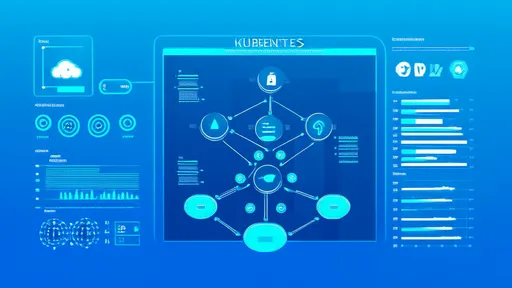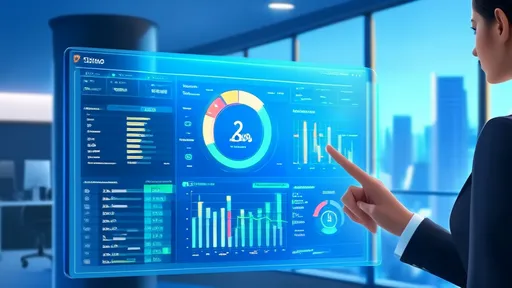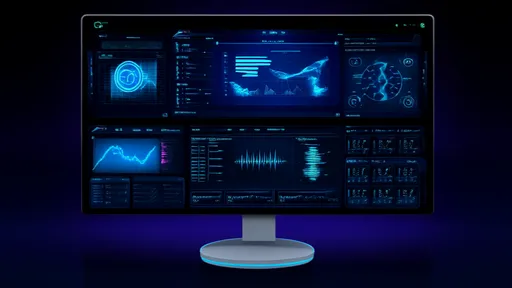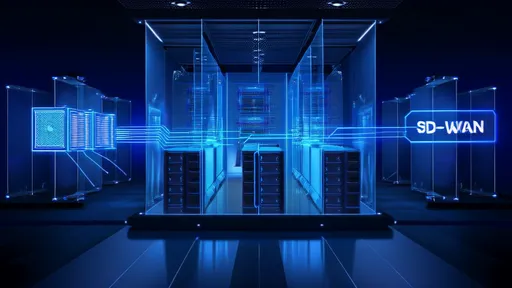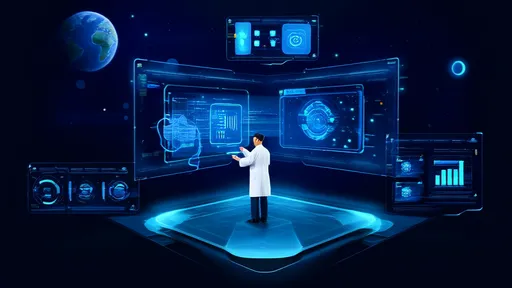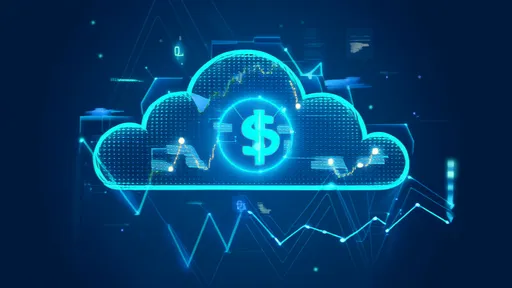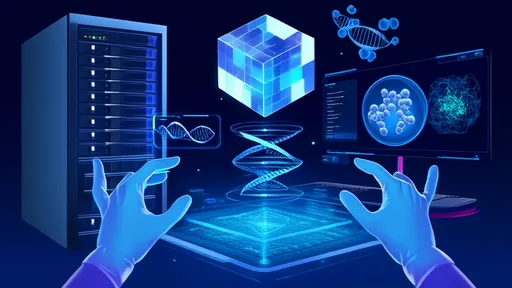The landscape of enterprise IT has undergone a seismic shift with the widespread adoption of multi-cloud and hybrid cloud strategies. While this approach offers unparalleled flexibility, cost optimization, and avoids vendor lock-in, it introduces a formidable layer of complexity. At the heart of this complexity lies the significant challenge of managing compatibility across disparate cloud environments. Cross-cloud management platforms have emerged as the central nervous system for this new reality, but their effectiveness is directly tied to their ability to navigate a labyrinth of compatibility issues.
One of the most pervasive compatibility challenges stems from the fundamental architectural differences between cloud providers. Amazon Web Services, Microsoft Azure, and Google Cloud Platform each possess unique APIs, proprietary services, and distinct operational paradigms. A management platform cannot simply assume that a script written for an AWS EC2 instance will function correctly on an Azure Virtual Machine, or that a storage lifecycle policy in Google Cloud Storage will map directly to Amazon S3. This API heterogeneity forces development teams to write and maintain provider-specific code, creating silos of automation and negating the very promise of a unified management layer. The problem is further compounded by the relentless pace of innovation; each provider frequently launches new services and updates existing ones, creating a moving target for any platform aiming to maintain full compatibility.
Beyond APIs, the issue of data portability and egress costs presents a substantial operational and financial hurdle. Moving data between clouds is rarely seamless. Differences in data formats, encryption standards, and transfer protocols can create friction and potential data corruption. More critically, cloud providers impose significant egress fees—charges for data moving out of their network. These costs can quickly erode the financial benefits of a multi-cloud strategy. A cross-cloud management platform must therefore be intelligent enough to not only facilitate data movement but also to optimize it, minimizing transfers and associated costs by making strategic decisions about data locality and processing.
Security and compliance configurations represent another critical arena where compatibility is non-negotiable yet difficult to achieve. Each cloud provider has its own identity and access management (IAM) framework, with different terminologies, permission structures, and policy syntaxes. Ensuring a consistent security posture across AWS IAM roles, Azure Active Directory, and Google Cloud IAM requires a deep, nuanced understanding of each system. A misconfiguration due to a compatibility oversight can create a critical security gap. Furthermore, compliance regimes often require specific controls to be in place uniformly across all environments, a task that is immensely challenging when the underlying tools and services behave differently.
In response to these daunting challenges, the industry has converged on several key solutions. The adoption and promotion of open standards and open-source technologies have become a primary weapon. Technologies like Kubernetes for container orchestration have achieved remarkable success by providing a common abstraction layer over the underlying infrastructure. By managing workloads through Kubernetes, organizations can achieve a high degree of portability, as the same manifest files can, in theory, be deployed across any supported cloud. Similarly, embracing open-source tools for monitoring (like Prometheus), logging (like Elasticsearch), and infrastructure-as-code (like Terraform) provides a consistent operational experience that bypasses many proprietary APIs.
Leading cross-cloud management platforms are no longer mere aggregators of different cloud consoles; they are evolving into intelligent abstraction layers. Their solution is to provide a unified set of APIs and policies that are then translated into the native commands for each target cloud. This approach allows developers and operators to work with a single, consistent model. The platform itself assumes the burden of compatibility, internally mapping a user's command to the correct API call for AWS, Azure, or GCP. This drastically reduces the cognitive load on IT teams and breaks down the automation silos that previously existed. The most advanced platforms use machine learning to continuously learn and adapt to API changes from providers, future-proofing their integrations to a certain extent.
Another sophisticated solution is the implementation of robust cost and security governance frameworks that are cloud-agnostic. Instead of trying to force each cloud's native cost management tool into a common mold, platforms pull raw usage and billing data from all sources into a centralized data warehouse. They then apply a standardized set of rules, tags, and policies to analyze and optimize spending across the entire estate. The same principle applies to security. Platforms provide a centralized policy engine where security rules—written once in a neutral language—are enforced across all clouds. They continuously monitor each environment, identify deviations from the baseline policy, and remediate issues by making the necessary provider-specific API calls, all transparently to the user.
Looking ahead, the future of cross-cloud compatibility will likely be shaped by the maturation of serverless and container-based architectures. These paradigms, by their very nature, encourage a design that is less dependent on specific cloud primitives. The industry is also seeing a push towards more collaborative efforts between major vendors on standards, though competition will always limit this. Ultimately, the goal is not to make all clouds look identical—their unique innovations are valuable—but to make them manageable as a single, cohesive, and efficient entity. The cross-cloud management platforms that succeed will be those that perfect the art of abstraction, providing a seamless layer of compatibility that empowers businesses to truly harness the collective power of the cloud without being ensnared by its complexities.
In today's rapidly evolving cybersecurity landscape, organizations face increasingly sophisticated threats that traditional perimeter-based defenses struggle to contain. The concept of microsegmentation has emerged as a critical component of zero trust architecture, fundamentally transforming how enterprises protect their digital assets. Unlike conventional security approaches that focus on building strong outer walls, microsegmentation operates on the principle that no entity—whether inside or outside the network—should be automatically trusted.
In the ever-evolving landscape of container orchestration, Kubernetes has firmly established itself as the de facto standard for managing containerized applications at scale. One of its most powerful features is the ability to automatically scale applications in response to fluctuating demand, ensuring optimal performance while controlling costs. However, implementing an effective autoscaling strategy requires more than just enabling the feature; it demands a thoughtful approach grounded in proven best practices.
In today's digital landscape, cloud computing has become the backbone of modern business operations, offering unparalleled scalability and flexibility. However, this convenience comes at a cost—literally. As organizations increasingly migrate to the cloud, managing and controlling cloud expenditures has emerged as a critical challenge. Many companies find themselves grappling with unexpected bills, wasted resources, and a lack of visibility into where their cloud dollars are going. This is where FinOps, a cultural practice and operational framework, steps in to bring financial accountability to the world of cloud spending.
The cybersecurity landscape continues to evolve at a breakneck pace, with containerization sitting squarely at the heart of modern application development. As organizations increasingly deploy applications using technologies like Docker and Kubernetes, the security of the underlying container images has become a paramount concern. This has spurred the development and maturation of a robust market for container image vulnerability scanning tools, each promising to fortify the software supply chain. A comprehensive evaluation of these tools reveals a complex ecosystem where capabilities, integration depth, and operational efficiency vary significantly.
As enterprises continue their digital transformation journeys, the debate between SD-WAN and SASE for hybrid cloud connectivity has become increasingly prominent. These two technologies represent different generations of networking solutions, each with distinct approaches to addressing the complex challenges of modern distributed architectures. While SD-WAN emerged as a revolutionary improvement over traditional MPLS networks, SASE represents a more comprehensive framework that integrates networking and security into a unified cloud-native service.
The evolution of cloud-native databases has entered a new phase with the rise of serverless architectures. What began as a shift from on-premise data centers to cloud-hosted instances has now matured into a more dynamic, cost-efficient, and scalable paradigm. The serverless model represents a fundamental rethinking of how databases are provisioned, managed, and utilized, moving away from static resource allocation toward an on-demand, pay-per-use approach. This transformation is not merely a technical upgrade but a strategic enabler for businesses aiming to thrive in an unpredictable, data-intensive landscape.
In the rapidly evolving landscape of cloud-native computing, the demand for robust observability has never been more critical. As organizations migrate to dynamic, distributed architectures, traditional monitoring tools often fall short in providing the depth and real-time insights required to maintain system reliability and performance. Enter eBPF—extended Berkeley Packet Filter—a revolutionary technology that is redefining how we achieve observability in cloud-native environments. Originally designed for network packet filtering, eBPF has evolved into a powerful kernel-level tool that enables developers and operators to gain unprecedented visibility into their systems without modifying application code or restarting processes.
The landscape of enterprise IT has undergone a seismic shift with the widespread adoption of multi-cloud and hybrid cloud strategies. While this approach offers unparalleled flexibility, cost optimization, and avoids vendor lock-in, it introduces a formidable layer of complexity. At the heart of this complexity lies the significant challenge of managing compatibility across disparate cloud environments. Cross-cloud management platforms have emerged as the central nervous system for this new reality, but their effectiveness is directly tied to their ability to navigate a labyrinth of compatibility issues.
The economic implications of serverless computing have become a central topic in cloud architecture discussions, shifting the conversation from pure technical implementation to strategic financial optimization. As organizations increasingly adopt Function-as-a-Service (FaaS) platforms, understanding the nuanced cost structures and optimization opportunities has become critical for maintaining competitive advantage while controlling cloud expenditures.
The landscape of software development has undergone a seismic shift with the proliferation of cloud-native architectures. As organizations race to deliver applications faster and more reliably through CI/CD pipelines, a critical challenge has emerged: security. The traditional approach of bolting on security measures at the end of the development cycle is no longer tenable. It creates bottlenecks, delays releases, and often results in vulnerabilities being discovered too late, when remediation is most costly and disruptive. In response, a transformative strategy known as "shifting left" has gained significant traction, fundamentally rethinking how and when security is integrated into the software development lifecycle.
The landscape of software testing is undergoing a profound transformation, driven by the relentless integration of artificial intelligence. One of the most impactful and rapidly evolving applications of AI in this domain is the automation of test case generation. This is not merely an incremental improvement to existing processes; it represents a fundamental shift in how development teams approach quality assurance, promising to accelerate release cycles while simultaneously enhancing the robustness and coverage of testing regimens.
In the ever-evolving landscape of artificial intelligence, voice generation technology has emerged as one of the most captivating and, at times, unsettling advancements. The ability to clone and generate highly realistic human voices is no longer confined to the realms of science fiction; it is a present-day reality with profound implications. This technology, often referred to as voice cloning or neural voice synthesis, leverages deep learning models to analyze, replicate, and generate speech that is indistinguishable from that of a real person. The process begins with the collection of a sample of the target voice, which can be as short as a few seconds or as long as several hours, depending on the desired fidelity and the complexity of the model being used.
The semiconductor industry stands at an inflection point where traditional chip design methodologies are increasingly strained by the complexity of modern architectures. As Moore's Law continues its relentless march, the once-manual processes of floorplanning and routing have become prohibitively time-consuming and error-prone. In this challenging landscape, reinforcement learning has emerged not merely as an experimental approach but as a transformative force in automating and optimizing chip layout.
In laboratories and research institutions across the globe, a quiet revolution is underway as artificial intelligence becomes an indispensable partner in scientific discovery. What was once the domain of human intuition, years of trial and error, and painstaking data analysis is now being accelerated at an unprecedented pace by machine learning algorithms and computational power. This transformation is not about replacing scientists but empowering them to ask bigger questions and uncover deeper truths about our universe.
In the ever-evolving landscape of artificial intelligence, a quiet revolution is taking place that promises to fundamentally reshape how machines understand the world. For decades, the field has been dominated by correlation-based approaches—powerful pattern recognition systems that excel at finding statistical relationships in data but fall painfully short when it comes to true understanding. The emerging discipline of causal machine learning seeks to change this paradigm, moving beyond mere correlations to uncover the actual mechanisms that drive phenomena in the real world.

